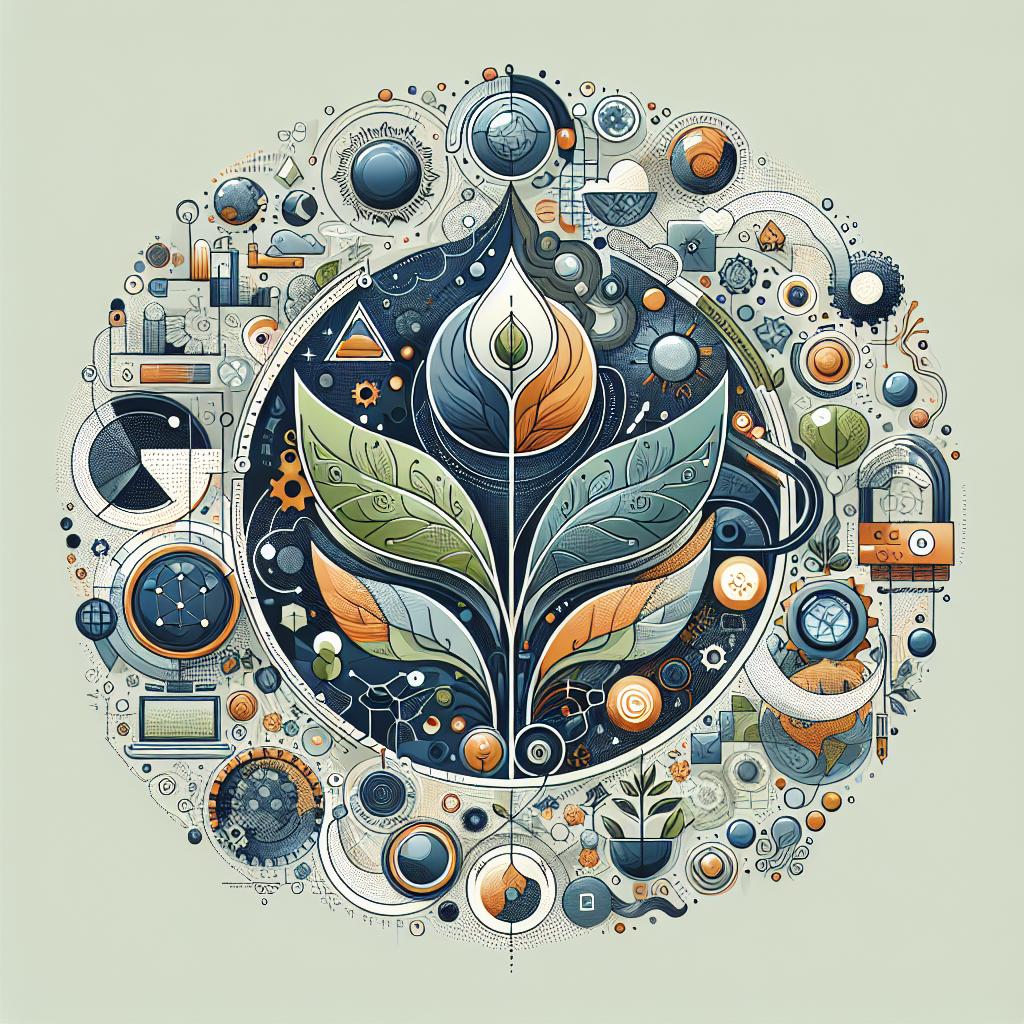This post may contain affiliate links which means I may receive a commission for purchases made through links. Learn more on my Private Policy page.
Exploring Multi-Functional Irrigation Systems for Diverse Crop Needs: A Fresh Approach too Farming
In the ever-evolving landscape of agriculture, the thirst for innovation is stronger than ever. As farmers face the dual challenges of climate variability and the need for sustainable practices, the call for smarter solutions rings louder. Welcome to the world of multi-functional irrigation systems—a game-changing approach that not only quenches the diverse needs of crops but also embraces the harmony of nature and technology. Imagine a system that adapts to the unique requirements of each plant, optimizing water use while boosting yields and minimizing waste.In this article, we’ll embark on an enlightening journey through the need for intelligent irrigation, uncover the latest advancements, and celebrate the pioneers who are redefining the way we nourish our fields.So roll up your sleeves, grab your watering can of curiosity, and let’s dive into the future of farming!
Unleashing the Power of Adaptable irrigation Solutions
In the quest for sustainable agriculture, adaptable irrigation systems are emerging as game-changers for farmers facing diverse crop requirements. These systems not only cater to varying water needs but are also designed to be flexible and responsive, ensuring optimal growth conditions across multiple crop types. Features of modern multi-functional irrigation solutions can include:
- Smart Sensors: Monitor soil moisture levels in real-time.
- Automated Scheduling: Adjust watering times based on climatic conditions.
- Drip and Sprinkler Options: Tailor the method of irrigation to crop variety.
- remote Monitoring: Utilize mobile apps for on-the-go management.
Furthermore, the integration of advanced technologies such as AI and IoT is revolutionizing how we approach irrigation. Farmers can easily analyze data and optimize their water usage, resulting in enhanced yield and reduced waste. For a clearer understanding, consider the following table showcasing the benefits of various irrigation techniques:
| Irrigation Type | Benefits |
|---|---|
| Drip Irrigation | Minimizes water waste; delivers water directly to roots. |
| Sprinkler System | Versatile for various crops; covers large areas effectively. |
| Surface Irrigation | Cost-effective; utilizes gravity for distribution. |

Balancing water Efficiency with Crop Diversity
Water efficiency is a critical concern for modern agriculture, especially in the context of climate change and population growth. To achieve prosperous farming while using resources sustainably, it is essential to tailor irrigation methods to accommodate a broad spectrum of crops.Implementing smart irrigation techniques can significantly enhance water conservation by utilizing technologies such as drip systems and sensors that deliver precise water amounts according to the specific needs of varied crops. The flexibility of these systems allows farmers to create a micro-surroundings that supports different plants, ensuring both healthy growth and minimal water waste.
A multi-functional irrigation strategy supports crop diversity by fostering a synergistic relationship between different plant species. It allows farmers to cultivate crops that might or else struggle in typical growing conditions. This approach not only increases overall biodiversity on the farm but also enhances soil health and resilience.In addition, diversified crops can offer different water usage profiles, meaning that some crops can thrive in lower moisture conditions while others may require additional irrigation. This adaptability leads to a more sustainable farming system and can even improve economic outcomes by reducing dependency on a single crop. The table below illustrates examples of crops and their respective water needs:
| Crop | Water Needs (liters/week) |
|---|---|
| tomatoes | 20-30 |
| Corn | 50-70 |
| Peppers | 25-40 |
| lettuce | 15-25 |

Harnessing Technology for Precision Irrigation Practices
In today’s agricultural landscape,technology plays a pivotal role in enhancing irrigation practices tailored to the unique requirements of diverse crops. By integrating smart sensors, drip irrigation systems, and automated control units, farmers can achieve remarkable precision in water application, ensuring that each plant receives exactly what it needs. This approach minimizes waste, conserves water, and promotes healthier crop growth, underscoring the importance of technology in sustainable farming. Not only does this optimize resource usage, but it also helps in monitoring soil moisture levels, allowing for more informed decision-making. Farmers can take advantage of valuable data insights to refine their strategies further and adapt to changing environmental conditions.
The advancement of multi-functional irrigation systems has transformed traditional farming methods. These systems can be customized to accommodate various crop types, each with its specific water requirements. Some key features include:
- Variable Rate Irrigation (VRI): Adjusts watering based on real-time data.
- Soil Moisture Monitoring: Provides precise feedback on soil conditions.
- Integrated weather Forecasting: Helps in planning irrigation schedules effectively.
To better illustrate the advantages, consider a comparison of different irrigation systems:
| Irrigation System | Water efficiency | Crop Suitability |
|---|---|---|
| Drip Irrigation | 90%+ | Vegetables, Fruits |
| Sprinkler Irrigation | 75%-85% | Cereals, Grasslands |
| Surface Irrigation | 60%-80% | Row crops, Orchards |

Cultivating Sustainability: Best Practices for Multi-Functional Systems
Incorporating multi-functional irrigation systems is essential for fostering sustainability in agriculture. These systems not only optimize water use but also enhance soil health and promote biodiversity. Here are some innovative practices to consider:
- Drip Irrigation: Targets root zones, reducing evaporation and runoff while delivering nutrients directly to crops.
- Rainwater Harvesting: Collects and stores rainwater for irrigation, minimizing dependency on groundwater.
- Precision Agriculture: Uses technology to monitor crop needs,ensuring resources are allocated efficiently based on real-time data.
- Crop Rotation: Alternating crops helps maintain soil fertility and reduce pest populations, which can enhance system functionality.
Most importantly, integrating these systems requires a deep understanding of local ecosystems and crop requirements. Utilizing soil moisture sensors can be a game changer, allowing farmers to irrigate only when necesary, which conserves water and energy. Below is a simple overview of different soil conditions and their ideal irrigation methods:
| Soil Type | Recommended Irrigation Method |
|---|---|
| sandy | Drip Irrigation |
| Clay | Surface irrigation |
| Loamy | Sprinkler Irrigation |
By adopting these practices and understanding the distinct requirements of various soil types, farmers can create multi-functional systems that not only support diverse crop needs but also contribute to the longevity of the environment.
Key Takeaways
As we wrap up our journey through the fascinating world of multi-functional irrigation systems, it’s clear that innovation is paving the way for the future of agriculture. These systems not only cater to the unique needs of diverse crops but also promote sustainable practices that benefit our environment. By embracing this technology, farmers can enhance yields while conserving precious resources, ensuring that our fields remain fruitful for generations to come.
Remember, the key lies in understanding your crops and their specific requirements. With the right irrigation strategy, you can transform not just your harvest, but also the health of the land that nourishes us. So, don your straw hat, roll up your sleeves, and dive into the possibilities that multi-functional irrigation offers. Here’s to cultivating a thriving tomorrow, one drop at a time! Happy farming! 🌱💧
This post may contain affiliate links which means I may receive a commission for purchases made through links. Learn more on my Private Policy page.

